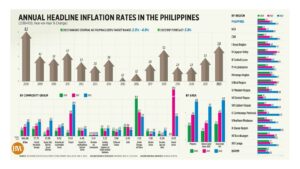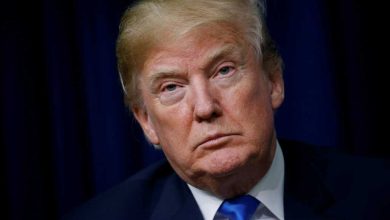GDP growth likely slowed in Q4 — poll

By Abigail Marie P. Yraola, Researcher
THE PHILIPPINE ECONOMY may have slowed in the fourth quarter of 2023, which likely resulted in gross domestic product (GDP) growth falling below the government’s full-year target, according to analysts.
GDP likely expanded by 5.7% in the October-to-December period in 2023, based on a median forecast of 20 economists polled by BusinessWorld, slower than the 5.9% growth in the third quarter and the 7.1% expansion in the same period in 2022.
The poll also yielded a median estimate growth of 5.5% for the full year of 2023, missing the Development Budget Coordination Committee’s 6-7% GDP growth target.
If realized, the full-year growth estimate for 2023 would be slower than the 7.6% expansion in 2022 and the slowest since the 9.5% contraction in 2020.
The BusinessWorld poll’s 5.5% GDP median estimate for 2023 is lower than the World Bank’s estimate of 5.6% and the Asian Development Bank’s estimate of 5.7% but higher than the International Monetary Fund’s estimate of 5.3%.
The Philippine Statistics Authority (PSA) will release the fourth-quarter and full-year 2023 GDP data on Wednesday (Jan. 31).
Economists said that slower growth in the last three months of 2023 was primarily due to reduced domestic demand and consumer spending.
“The slowdown from the previous quarter was likely due to lower consumer spending and export growth,” Makoto Tsuchiya, economist at Oxford Economics said.
He noted the pent-up demand in certain service sectors is fading, while soft global growth and maturing recovery in the tourism sector led to an export slowdown.
For Zamros Bin Dzulkafli, economist at Maybank Investment Banking Group, the fourth-quarter GDP growth was driven by domestic demand due to ongoing infrastructure projects, a pickup in government spending, and low unemployment rate.
HSBC ASEAN (Association of Southeast Asian Nations) economist Aris Dacanay said that the country is still exposed to a slump in global demand but is expected to be among the fastest-growing economies in the region even with risks tilted to the upside, thanks to the robust and resilient labor force.
In the third quarter of 2023, GDP expanded by 5.9%, due to the pickup in government spending which ended three straight quarters of slowing growth.
Meanwhile, merchandise exports dropped by 0.5% to $5.78 billion in December, slower than the 7.5% decline in December 2022. This resulted in exports contracting by 7.6% to $73.52 billion in 2023.
Similarly, imports fell by 5.1% to $9.79 billion in December, bringing the full-year import haul down by 8.2% to $125.95 billion.
This brought the full-year trade deficit to $52.42 billion from the $57.65-billion gap in 2022, narrowing by 9.1%.
Meanwhile, latest PSA data showed that the unemployment rate slipped to 3.6% in November 2023. This marked the lowest rate of unemployment since April 2005, when the statistics agency revised its definition of unemployment to refer to people aged 15 years and older, who do not have a job, are available for work, and are actively seeking employment.
In November, the number of unemployed Filipinos decreased by 12.3% or 257,000 to 1.83 million from 2.09 million in October 2023.
“We believe that the unhealthy rise in consumer prices and a sharp increase in interest rates weighed down household spending and fixed capital formation,” Alvin Joseph A. Arogo, economist at Philippine National Bank, said in an e-mail.
He also added that government spending and reduced imports cannot sustainably drive a strong rate of economic expansion due to fiscal constraints.
Headline inflation slowed to 3.9% in December bringing the full-year 2023 average to 6%, the highest reading since the 8.2% posted in 2008.
Meanwhile, the central bank kept its benchmark interest rate at a 16-year high of 6.5% in its latest policy meeting. The central bank hiked interest rates by a cumulative of 450 basis points between May 2022 and October 2023 in its efforts to tame inflation.
Due to broad-based weakness, the Philippine economy slowed from the third quarter, said Shivaan Tandon, economist at Capital Economics.
“Admittedly, price pressures eased in the last quarter, which will have supported real incomes. But this is likely to have been partially offset by other factors… Elevated interest rates are also likely to have weighed on domestic demand,” he said in an e-mail exchange.
Sarah Tan, an economist from Moody’s Analytics, said the economy likely expanded by 4.9% in the fourth quarter, supported by the improvement in private consumption due to easing inflation, a tight labor market, and robust remittances.
She added that government agencies ramped up spending by yearend, while a softening global economy likely moderated private investment and trade.
Cash remittances coursed through banks during the January-to-November period grew by 2.8% to $30.211 billion, falling below the Bangko Sentral ng Pilipinas’ (BSP) remittance growth projection of 3% for 2023.
GLOBAL SLOWDOWN
In 2023, Ms. Tan said monetary tightening and the global economic slowdown impacted the Philippine economy.
“High borrowing costs kept Philippine households and businesses cautious in their spending through 2023, capping private consumption and investment growth,” she added.
Miguel Chanco, chief emerging Asia economist at Pantheon Macroeconomics, said that the economy seems to have suffered a general reduction in domestic demand in the fourth quarter, but this may have been offset by a boost in net trade due to a pullback in imports.
He also added that external developments impacted exports, but the main concern was the slowdown in private consumption growth throughout the entire year.
“Monetary policy affects the economy with a lag, and the BSP’s overly aggressive rate hiking cycle, in our view, will continue to depress domestic demand this year, as it did in the last 12 months,” he said.
For Nicholas Antonio T. Mapa, senior economist at ING Bank N.V. Manila, the economy is less reliant on global developments and more driven by domestic factors. He noted GDP could have expanded at a faster pace if the BSP had not hiked interest rates aggressively.
This could have also resulted in a negligible and negative contribution from capital formation during the second and third quarters of 2023.
Gross capital formation — the investment component of the economy — fell by 1.6% in the third quarter of 2023, ending nine straight quarters of growth.
OUTLOOK
For this year, economists expect slower economic growth due to the global slowdown, decelerating inflation, and declining interest rates, among others.
Economic managers target GDP growth to settle within 6.5%-7.5% in 2024.
“We think most of the headwinds will likely persist into 2024. Particularly, the impact of past monetary tightening will continue to weigh on domestic demand even if the BSP pivots to rate cuts during the year, as monetary policy works with lags,” Oxford Economics’ Mr. Tsuchiya said.
He also added that the global economic slowdown will weigh on external demand.
Maybank’s Mr. Dzulkafli said he expects slower growth in the first quarter of 2024 due to elevated food inflation, high-interest rates, and global uncertainty. However, growth is expected to pick up in the second half of the year as the central bank is seen to start cutting policy interest rates.
Ser Percival K. Peña-Reyes, director of the Ateneo Center for Economic Research and Development, said he has a cautious outlook for 2024, adding the economy’s performance would depend on the ability to attract investments.
Domini S. Velasquez, chief economist at China Banking Corp., said that the economy will improve in 2024 due to slowing inflation, monetary easing in the second half of the year, and an increased government budget.
“However, we note that the economy would still have to contend with headwinds such as a global economic slowdown and heightened geopolitical tensions,” she added.
Diwa Guinigundo, Philippines analyst at GlobalSource Partners said that there are still risks to economic growth this year, adding that if geopolitical tensions persist, supply chains may not be mitigated while the drift towards geo-economic fragmentation could weaken international trade.
Resource-wise, he said that the current level of public debt could cause a diversion of public funds from the provision of infrastructure and social services to debt servicing.




